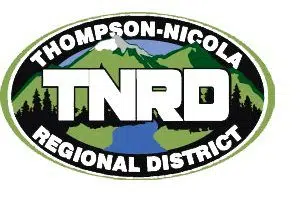
Photo via Andybremner2012/Wikimedia Commons
The Mayor of Lytton is waiting for test results from the Ministry of Environment that show the toxicity in Lytton, six weeks after a wildfire destroyed most of that community.
Jan Polderman says those results, which are expected by next Monday, August 16, will help with the two big things he is working on right now.
The first is allowing people to return back home to properties in Lytton that are still standing, while the other is getting temporary housing for people who lost everything.
“It could be a long as a couple of years before homes are rebuilt,” he said. “People are going to need to go back to their properties and retrieve what they can and the site needs to be remediated, infrastructure needs to be repaired, and then the reconstruction can start.”
For now, Polderman says people who were displaced are taking shelter wherever they can – in evacuation centres, in hotels, in rented houses, and even with friends and family.
“There are a wide variety of scenarios as some people have insurance, some people don’t,” he added. “There will be an assessment made on people’s needs and appropriate housing will be brought in.”
The Mayor of nearby Ashcroft says it will be important to keep people who want to return to Lytton close to the community, while it is being rebuilt.
Barbara Roden says it is because if people move to other parts of B.C. or Canada, they will be less likely to come back to the Lytton-area.
“Kanaka Bar Indian Band has come up with a proposal to house some people and provide some temporary buildings and structures for them and I think that’s a great first step, if it happens to keep people close to Lytton,” she said. “It is so they they can see the rebuilding, they can have some kind of a timeline so that when that time comes, they can move back.”
Roden says the Village of Lytton was rebuilt every time after it was badly damaged by wildfires in 1931, 1938 and 1949.
The plan is to rebuild Lytton with buildings and infrastructure that would feature net-zero energy use. Documents posted online also outlined a dozen tasks to be started by the end of this month, including coordinating the cleanup of burned areas, identifying residents’ immediate needs and determining how to meet them, and gathering residents’ feedback on the rebuild.
Polderman says government funding will be sought to help pay the costs of these green goals.
The village has also launched the “Lytton Rebuild” fundraising drive online, with goals that include a geothermal heating grid, using green energy, building with fire-resistant materials, planting drought-tolerant plants and trees, and installing solar road surfaces that could reduce heat absorption while powering street lights.
Most of the community of Lytton was destroyed by a wildfire back on June 30.
Lytton residents sympathize with Monte Lake residents: Polderman
Speaking on the NL Morning News, Polderman also says residents in his community know how people in Monte Lake are feeling, after seeing the destruction caused by the White Rock Lake Fire last week.
“It brings up emotions and I’d want to say to them that we’re all in this together and that as time goes on, we’ll work to rebuild the province better than it was before,” he said. “While I understand their will to save their properties, they also need to think of their personal safety and that of people who may be required to come in and rescue them, should things go badly.”
“The people in charge of this fire are making every effort to save both their livestock and people’s pets.”
Polderman noted it has been a challenging fire season this year, and he knows it will take time to rebuild both communities.
“People fighting the fires, you know they’re working under very difficult conditions and the armchair quarterbacking of their efforts, I don’t think is very helpful,” he added. “To the people that have been affected by the fire, this is going to take some time to rebuild, so you need to practice patience.”















